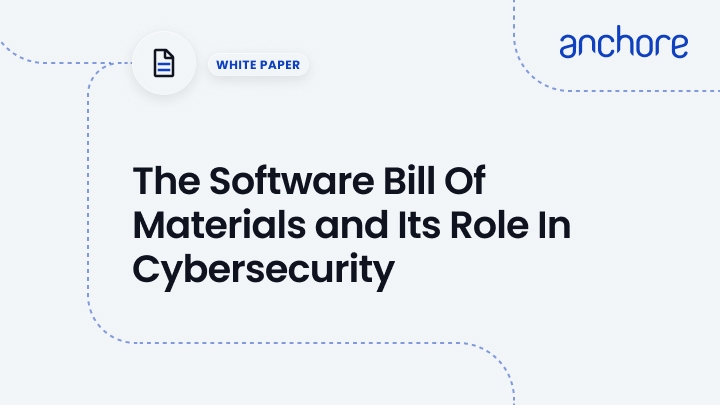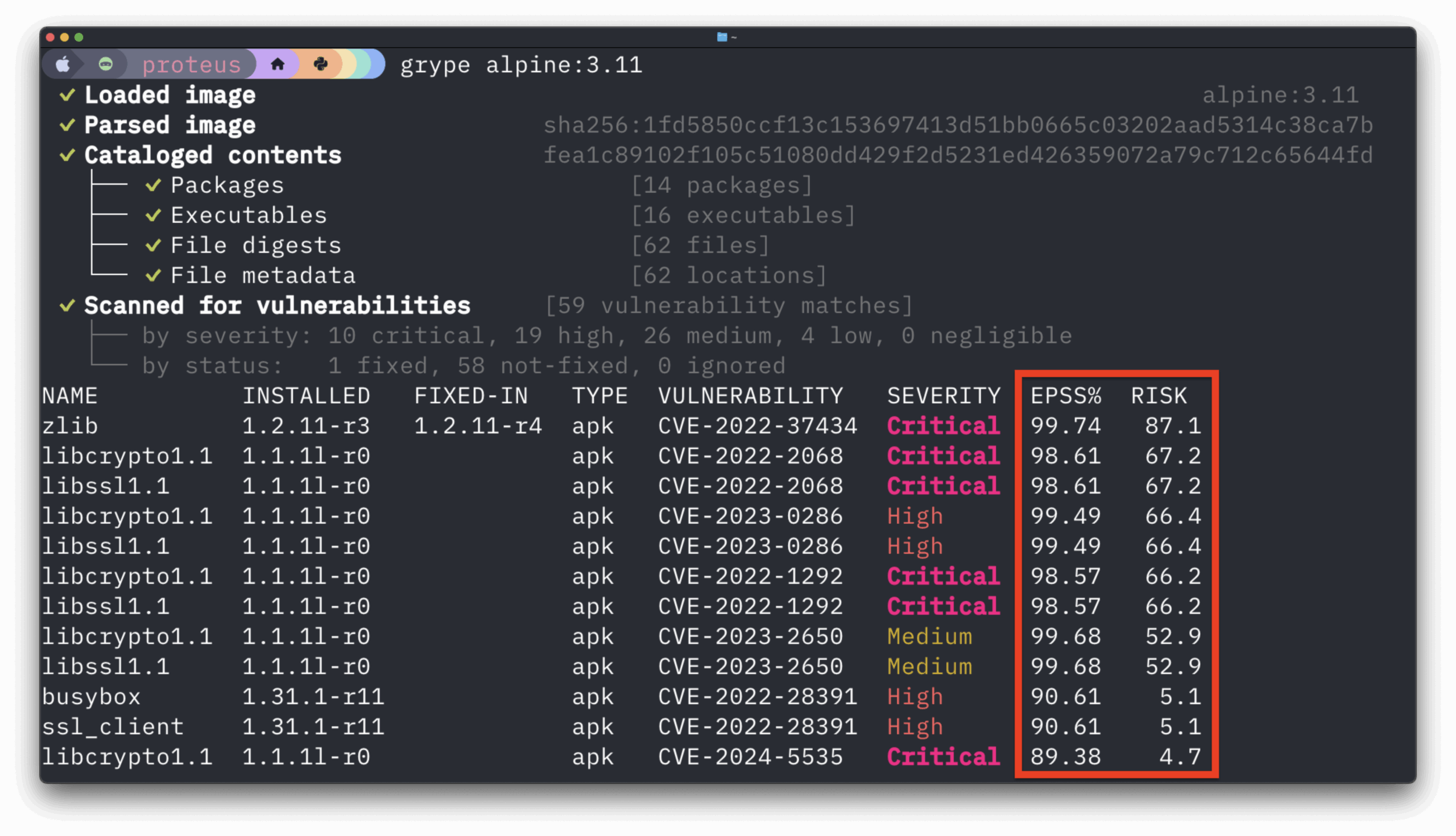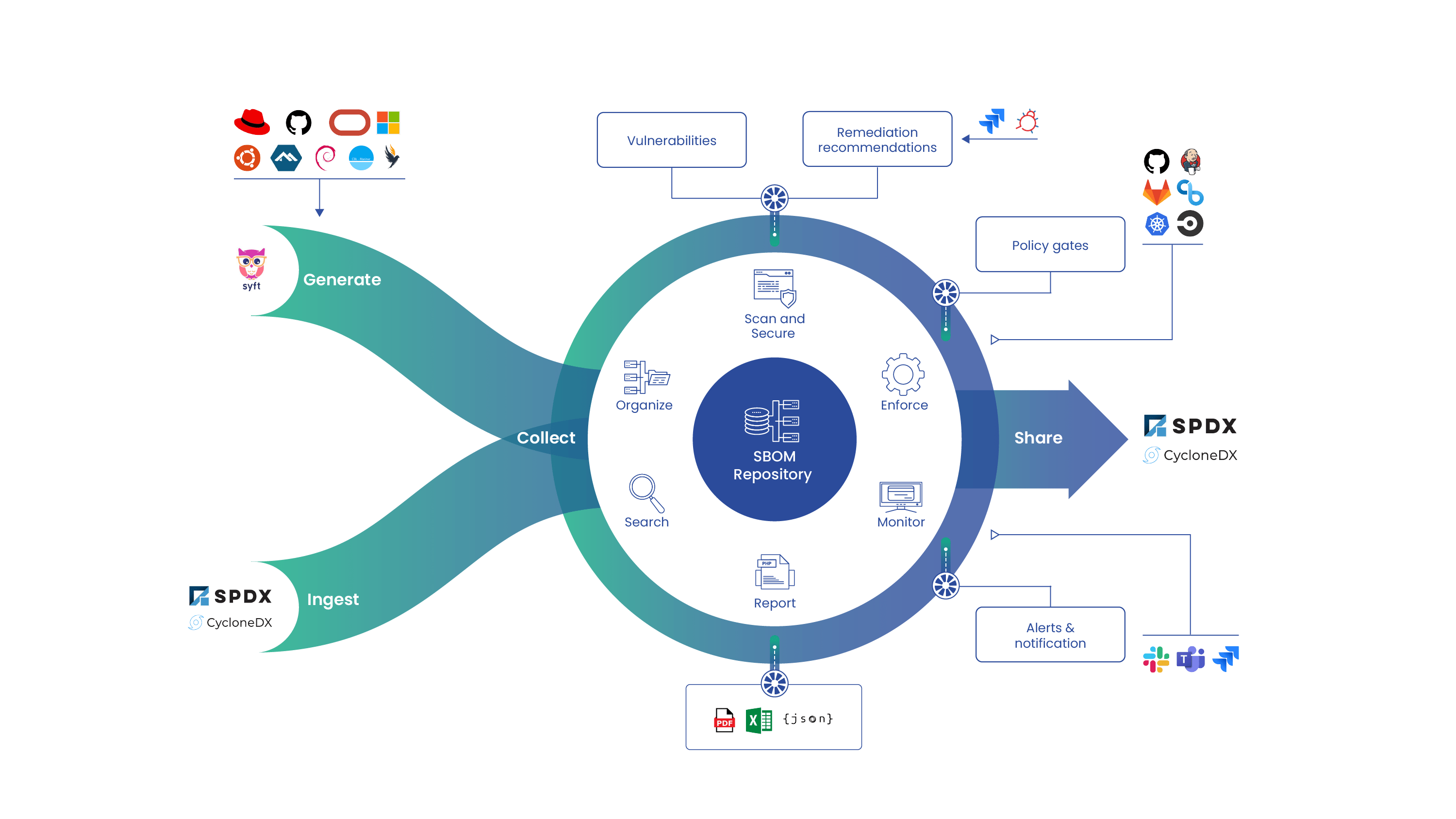Choosing the right SBOM (software bill of materials) generator is tricker than it looks at first glance. SBOMs are the foundation for a number of different uses ranging from software supply chain security to continuous regulatory compliance. Due to its cornerstone nature, the SBOM generator that you choose will either pave the way for achieving your organization’s goals or become a road block that delays critical initiatives.
But how do you navigate the crowded market of SBOM generation tools to find the one that aligns with your organization’s unique needs? It’s not merely about selecting a tool with the most features or the nicest CLI. It’s about identifying a solution that maps directly to your desired outcomes and use-cases, whether that’s rapid incident response, proactive vulnerability management, or compliance reporting.
We at Anchore have been enabling organizations to achieve their SBOM-related outcomes and do it with the least amount of frustration and setbacks. We’ve compiled our learnings on choosing the right SBOM generation tool into a framework to help the wider community make decisions that set them up for success.
Below is a quick TL;DR of the high-level evaluation criteria that we cover in this blog post:
- Understanding Your Use-Cases: Aligning the tool with your specific goals.
- Ecosystem Compatibility: Ensuring support for your programming languages, operating systems, and build artifacts.
- Data Accuracy: Evaluating the tool’s ability to provide comprehensive and precise SBOMs.
- DevSecOps Integration: Assessing how well the tool fits into your existing DevSecOps tooling.
- Proprietary vs. Open Source: Weighing the long-term implications of your choice.
By focusing on these key areas, you’ll be better equipped to select an SBOM generator that not only meets your current requirements but also positions your organization for future success.
Know your use-cases
When choosing from the array of SBOM generation tools in the market, it is important to frame your decision with the outcome(s) that you are trying to achieve. If your goal is to improve the response time/mean time to remediation when the next Log4j-style incident occurs—and be sure that there will be a next time—an SBOM tool that excels at correctly identifying open source licenses in a code base won’t be the best solution for your use-case (even if you prefer its CLI ;-D).
What to Do:
- Identify and prioritize the outcomes that your organization is attempting to achieve
- Map the outcomes to the relevant SBOM use-cases
- Review each SBOM generation tool to determine whether they are best suited to your use-cases
It can be tempting to prioritize an SBOM generator that is best suited to our preferences and workflows; we are the ones that will be using the tool regularly—shouldn’t we prioritize what makes our lives easier? If we prioritize our needs above the goal of the initiative we might end up putting ourselves into a position where our choice in tools impedes our ability to recognize the desired outcome. Using the correct framing, in this case by focusing on the use-cases, will keep us focused on delivering the best possible outcome.
SBOMs can be utilized for numerous purposes: security incident response, open source license compliance, proactive vulnerability management, compliance reporting or software supply chain risk management. We won’t address all use-cases/outcomes in this blog post, a more comprehensive treatment of all of the potential SBOM use-cases can be found on our website.
Example SBOM Use-Cases:
- Security incident response: an inventory of all applications and their dependencies that can be queried quickly and easily to identify whether a newly announced zero-day impacts the organization.
- Proactive vulnerability management: all software and dependencies are scanned for vulnerabilities as part of the DevSecOps lifecycle and remediated based on organizational priority.
- Regulatory compliance reporting: compliance artifacts and reports are automatically generated by the DevSecOps pipeline to enable continuous compliance and prevent manual compliance work.
- Software supply chain risk management: an inventory of software components with identified vulnerabilities used to inform organizational decision making when deciding between remediating risk versus building new features.
- Open source license compliance: an inventory of all software components and the associated OSS license to measure potential legal exposure.
Pro tip: While you will inevitably leave many SBOM use-cases out of scope for your current project, keeping secondary use-cases in the back of your mind while making a decision on the right SBOM tool will set you up for success when those secondary use-cases eventually become a priority in the future.
Does the SBOM generator support your organization’s ecosystem of programming languages, etc?
SBOM generators aren’t just tools to ingest data and re-format it into a standardized format. They are typically paired with a software composition analysis (SCA) tool that scans an application/software artifact for metadata that will populate the final SBOM.
Support for the complete array of programming languages, build artifacts and operating system ecosystems is essentially an impossible task. This means that support varies significantly depending on the SBOM generator that you select. An SBOM generator’s ability to help you reach your organizational goals is directly related to its support for your organization’s software tooling preferences. This will likely be one of the most important qualifications when choosing between different options and will rule out many that don’t meet the needs of your organization.
Considerations:
- Programming Languages: Does the tool support all languages used by your team?
- Operating Systems: Can it scan the different OS environments your applications run on top of?
- Build Artifacts: Does the tool scan containers? Binaries? Source code repositories?
- Frameworks and Libraries: Does it recognize the frameworks and libraries your applications depend on?
Data accuracy
This is one of the most important criteria when evaluating different SBOM tools. An SBOM generator may claim support for a particular programming language but after testing the scanner you may discover that it returns an SBOM with only direct dependencies—honestly not much better than a package.json or go.mod file that your build process spits out.
Two different tools might both generate a valid SPDX SBOM document when run against the same source artifact, but the content of those documents can vary greatly. This variation depends on what the tool can inspect, understand, and translate. Being able to fully scan an application for both direct and transitive dependencies as well as navigate non-ideomatic patterns for how software can be structured end up being the true differentiators between the field of SBOM generation contenders.
Imagine using two SBOM tools on a Debian package. One tool recognizes Debian packages and includes detailed information about them in the SBOM. The latter can’t fully parse the Debian .deb format and omits critical information. Both produce an SBOM, but only one provides the data you need to power use-case based outcomes like security incident response or proactive vulnerability management.
Let’s make this example more concrete by simulating this difference with Syft, Anchore’s open source SBOM generation tool:
$ syft -q -o spdx-json nginx:latest > nginx_a.spdx.json
$ grype -q nginx_a.spdx.json | grep Critical
libaom3 3.6.0-1+deb12u1 (won't fix) deb CVE-2023-6879 Critical
libssl3 3.0.14-1~deb12u2 (won't fix) deb CVE-2024-5535 Critical
openssl 3.0.14-1~deb12u2 (won't fix) deb CVE-2024-5535 Critical
zlib1g 1:1.2.13.dfsg-1 (won't fix) deb CVE-2023-45853 CriticalIn this example, we first generate an SBOM using Syft then run it through Grype—our vulnerability scanning tool. Syft + Grype uncover 4 critical vulnerabilities.
Now let’s try the same thing but “simulate” an SBOM generator that can’t fully parse the structure of the software artifact in question:
$ syft -q -o spdx-json --select-catalogers "-dpkg-db-cataloger,-binary-classifier-cataloger" nginx:latest > nginx_b.spdx.json
$ grype -q nginx_b.spdx.json | grep Critical
$In this case, we are returned none of the critical vulnerabilities found with the former tool.
This highlights the importance of careful evaluation of the SBOM generator that you decide on. It could mean the difference between effective vulnerability risk management and a security incident.
Can the SBOM tool integration into your DevSecOps pipeline?
If the SBOM generator is packaged as a self-contained binary with a command line interface (CLI) then it should tick this box. CI/CD build tools are most amenable to this deployment model. If the SBOM generation tool in question isn’t a CLI then it should at least run as a server with an API that can be called as part of the build process.
Integrating with an organization’s DevSecOps pipeline is key to enable a scalable SBOM generation process. By implementing SBOM creation directly into the existing build tooling, organizations can leverage existing automation tools to ensure consistency and efficiency which are necessary for achieving the desired outcomes.
Proprietary vs. open source SBOM generator?
Using an open source SBOM tool is considered an industry best practice. This is because it guards against the risks associated with vendor lock-in. As a bonus, the ecosystem for open source SBOM generation tooling is very healthy. OSS will always have an advantage over proprietary in regards to ecosystem coverage and data quality because it will get into the hands of more users which will create a feedback loop that closes gaps in coverage or quality.
Finally, even if your organization decides to utilize a software supply chain security product that has its own proprietary SBOM generator, it is still better to create your SBOMs with an open source SBOM generator, export to a standardized format (e.g., SPDX or CycloneDX) then have your software supply chain security platform ingest these non-proprietary data structures. All platforms will be able to ingest SBOMs from one or both of these standards-based formats.
Wrap-Up
In a landscape where the next security/compliance/legal challenge is always just around the corner, equipping your team with the right SBOM generator empowers you to act swiftly and confidently. It’s an investment not just in a tool, but in the resilience and security of your entire software supply chain. By making a thoughtful, informed choice now, you’re laying the groundwork for a more secure and efficient future.





